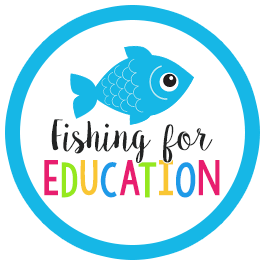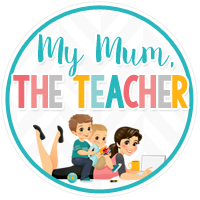Anytime is a great time to take learning outside the classroom, but it's a particularly nice time in term 4 in Australia to go outside because the weather is getting sunnier and warmer.
Kids love being outside during the school day. At recess and lunch breaks they get to relax, play, and be social. As teachers, we can use the outdoors, and outside of the school grounds, as teaching spaces which are highly engaging, a novelty to students, and can break up the school day.
An easy resource to use is chalk! Use the concrete or asphalt as the paper, and chalk instead of pens and pencils. Students can practice writing letters or high frequency words, write maths sums, draw 2D shapes, draw life cycles of plants and animals, create mazes (perfect for STEM and Design and Technology), write a poem, play a friendly game of Noughts and Crosses... the options are endless! It's fun, it can encourage creativity, and chalk drawings are great for motor skills and upper body strength/control.
Science and STEM activities work wonderfully outside! Creating colourful paintings using bubble mixture coloured by food dye, testing soil samples to find out if they are loamy, sandy or clay-y, testing plasticine boats to see how much they can hold before they sink, creating mazes in the sandpit, and doing an Earth's surface field study are just some ideas. You could also look at the natural changes that occur during the changing seasons, make a sundial and look at how the sun moves, search for mini-beasts/bugs, explore forces such as push and pull, or create a larger scale model of the Solar System on your basketball courts or ovals.
Sport is an obvious suggestion for doing learning outside. But, you might also like to investigate going to your nearest ten pin bowling lanes or lawn bowls club to expand your students' physical education experiences. You could create an obstacle course on the play equipment to practice location and directional vocabulary. And, of course, a game of Poison Ball is fun, too!
Going further outside the school grounds, School Camps are awesome learning experiences for our students. They practice independence, getting along and resilience. Don't forget to continue the 'camp' learning back at school by writing and drawing about the activities they did on camp, discussing their feelings and the strategies they used when they were unsure or were taking a risk, and even recreating some of the activities, but maybe on a smaller/simpler scale.
If your school goes through some building changes (like mine is) embrace the change! I take my class out every couple of days to look at and discuss the construction site, to see what has changed and to look at the different equipment and vehicles they are using to change our school. This can be incorporated in lots of different ways in class, as well, like plotting the changes on a calendar to look at how much time has passed, designing and creating models of a "dream school building", recording or graphing the different materials students have seen on the work site, or exploring the process for constructing and building and follow or writing a procedural text to create a mini building.
What are your favourite activities to do to take learning outside?
Kids love being outside during the school day. At recess and lunch breaks they get to relax, play, and be social. As teachers, we can use the outdoors, and outside of the school grounds, as teaching spaces which are highly engaging, a novelty to students, and can break up the school day.
An easy resource to use is chalk! Use the concrete or asphalt as the paper, and chalk instead of pens and pencils. Students can practice writing letters or high frequency words, write maths sums, draw 2D shapes, draw life cycles of plants and animals, create mazes (perfect for STEM and Design and Technology), write a poem, play a friendly game of Noughts and Crosses... the options are endless! It's fun, it can encourage creativity, and chalk drawings are great for motor skills and upper body strength/control.
Science and STEM activities work wonderfully outside! Creating colourful paintings using bubble mixture coloured by food dye, testing soil samples to find out if they are loamy, sandy or clay-y, testing plasticine boats to see how much they can hold before they sink, creating mazes in the sandpit, and doing an Earth's surface field study are just some ideas. You could also look at the natural changes that occur during the changing seasons, make a sundial and look at how the sun moves, search for mini-beasts/bugs, explore forces such as push and pull, or create a larger scale model of the Solar System on your basketball courts or ovals.
Sport is an obvious suggestion for doing learning outside. But, you might also like to investigate going to your nearest ten pin bowling lanes or lawn bowls club to expand your students' physical education experiences. You could create an obstacle course on the play equipment to practice location and directional vocabulary. And, of course, a game of Poison Ball is fun, too!
Going further outside the school grounds, School Camps are awesome learning experiences for our students. They practice independence, getting along and resilience. Don't forget to continue the 'camp' learning back at school by writing and drawing about the activities they did on camp, discussing their feelings and the strategies they used when they were unsure or were taking a risk, and even recreating some of the activities, but maybe on a smaller/simpler scale.
If your school goes through some building changes (like mine is) embrace the change! I take my class out every couple of days to look at and discuss the construction site, to see what has changed and to look at the different equipment and vehicles they are using to change our school. This can be incorporated in lots of different ways in class, as well, like plotting the changes on a calendar to look at how much time has passed, designing and creating models of a "dream school building", recording or graphing the different materials students have seen on the work site, or exploring the process for constructing and building and follow or writing a procedural text to create a mini building.
What are your favourite activities to do to take learning outside?
Happy teaching,
Jem (Jem's Bright Buttons)


















































